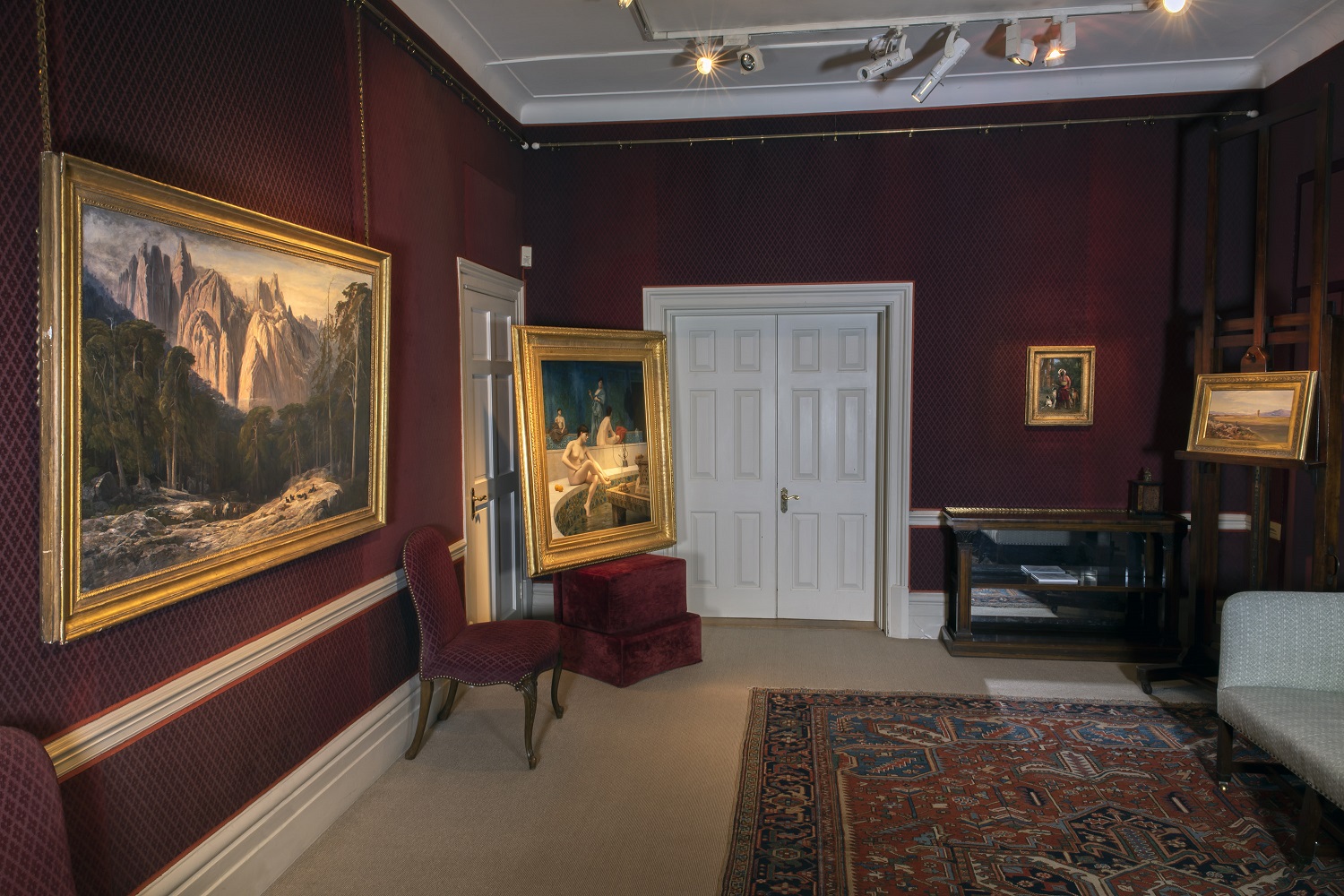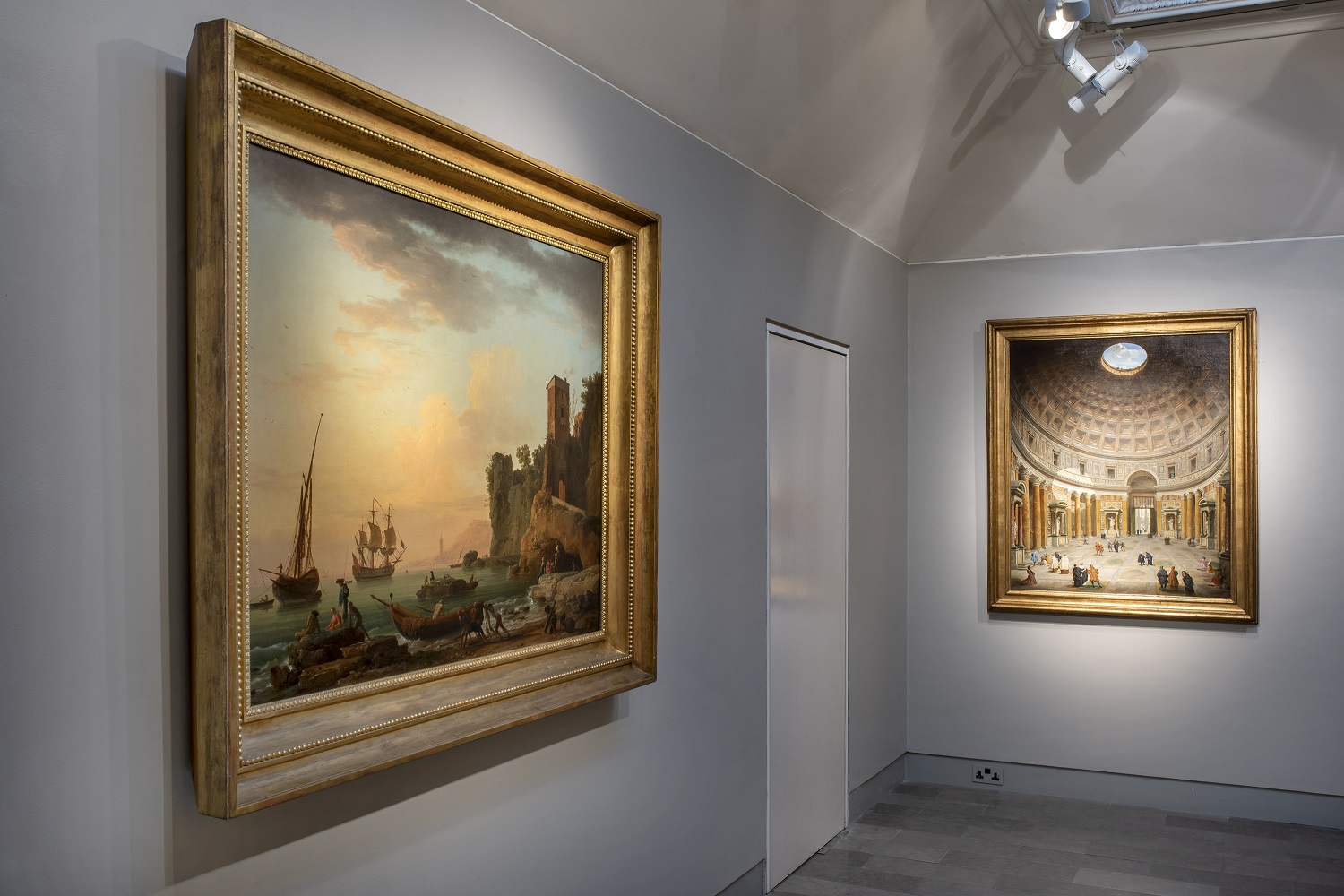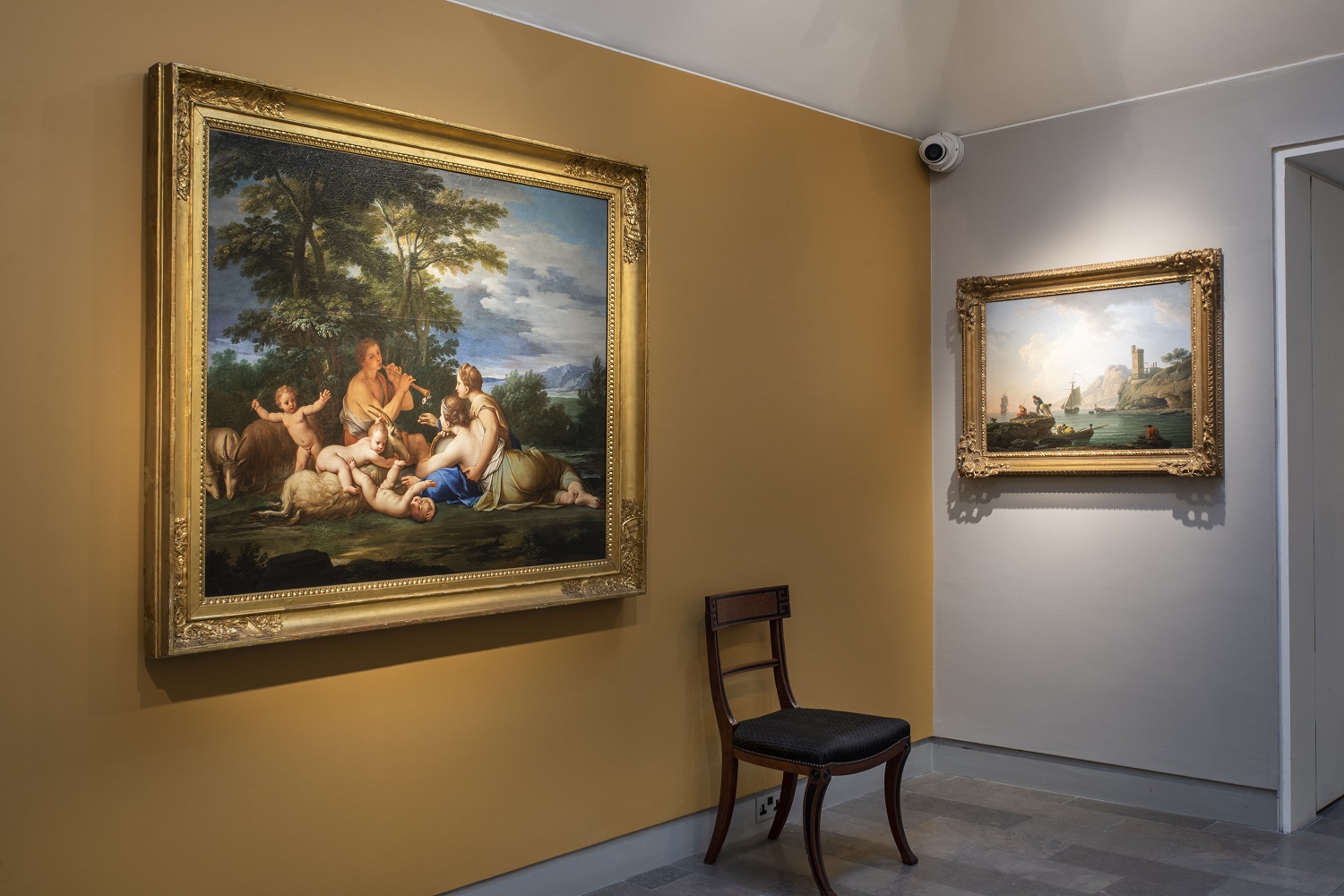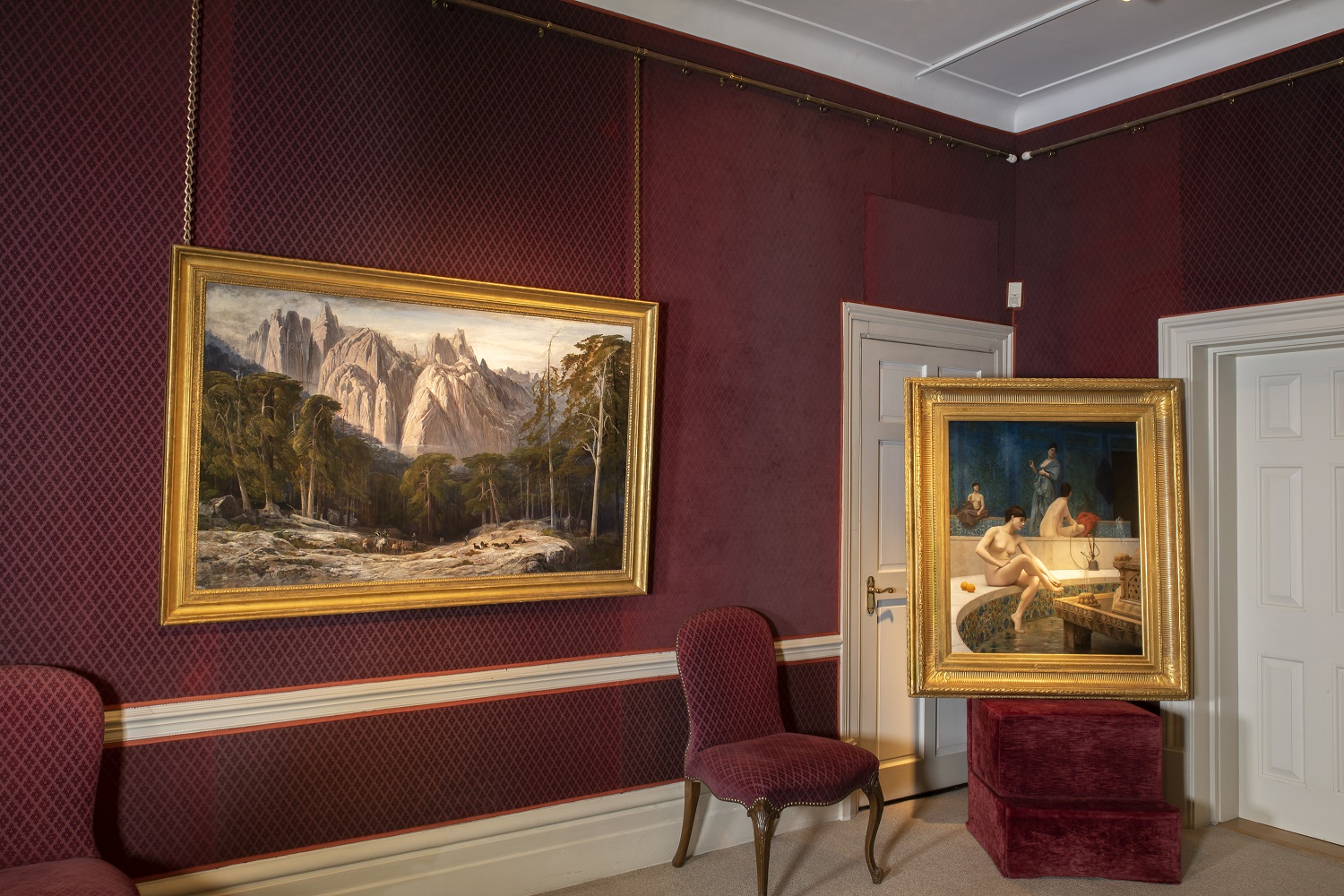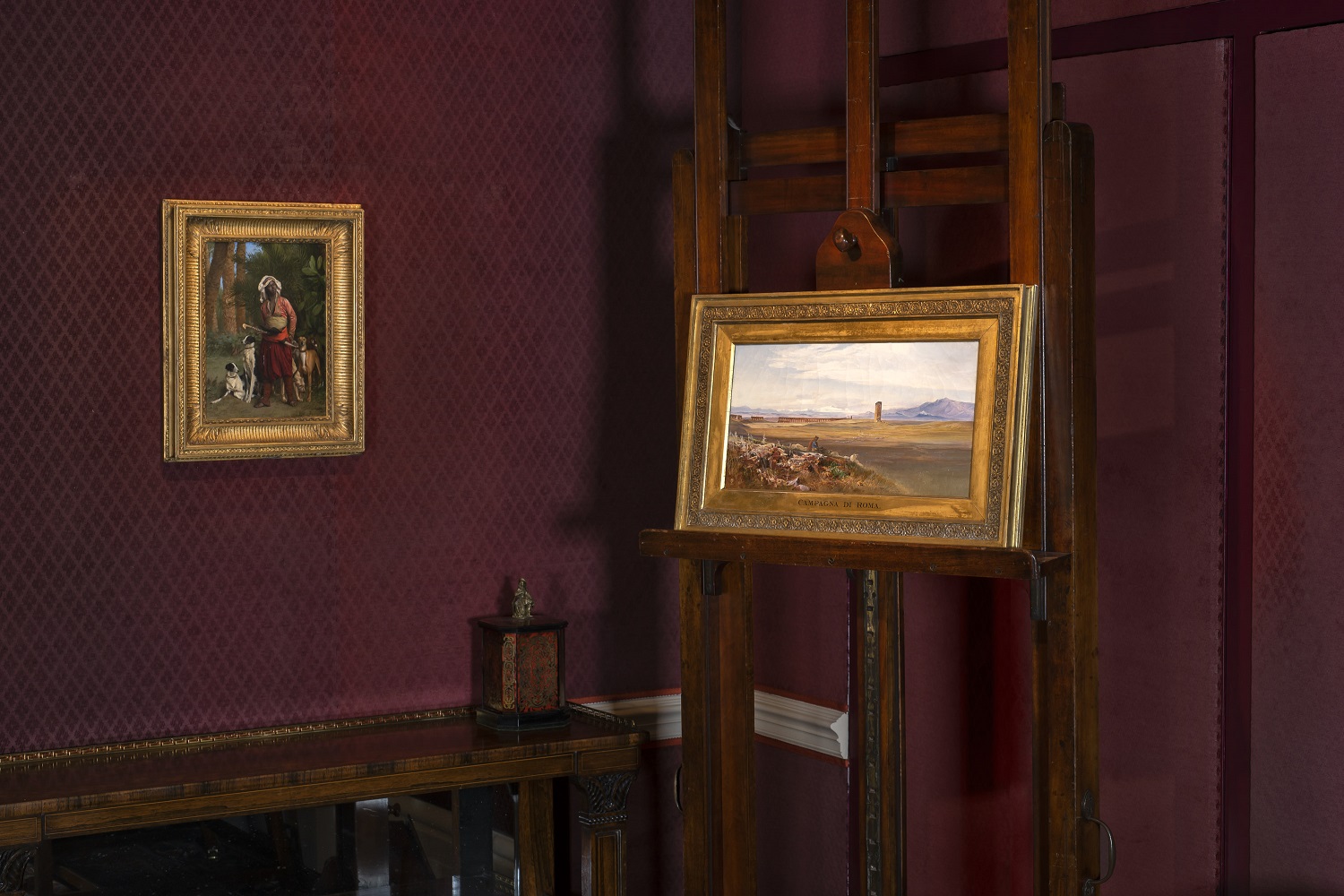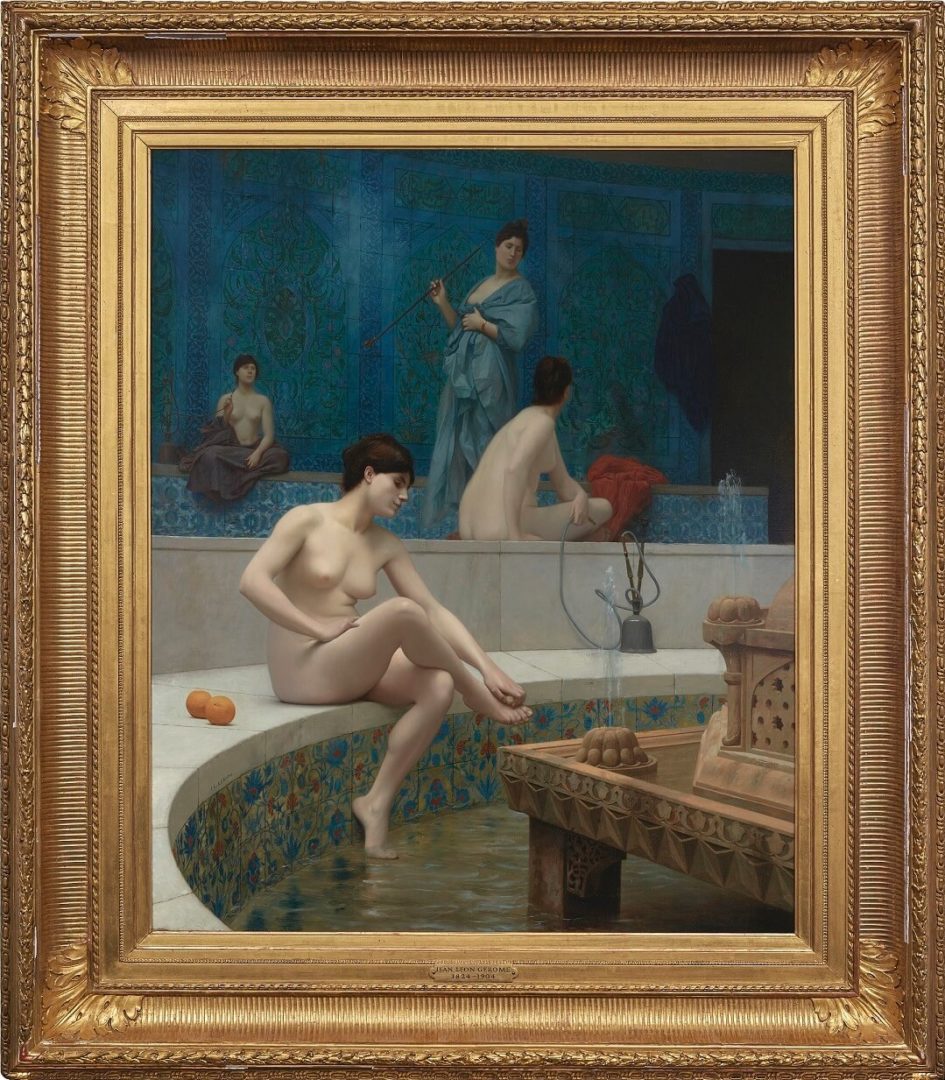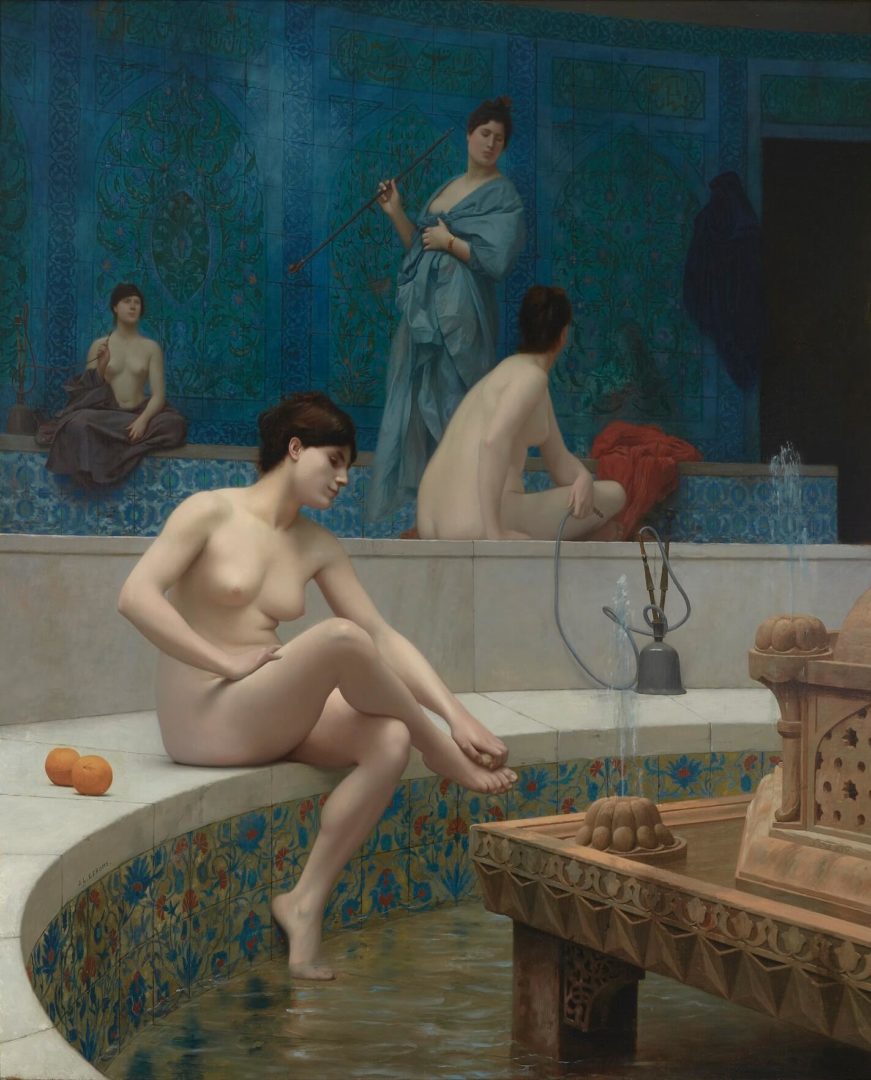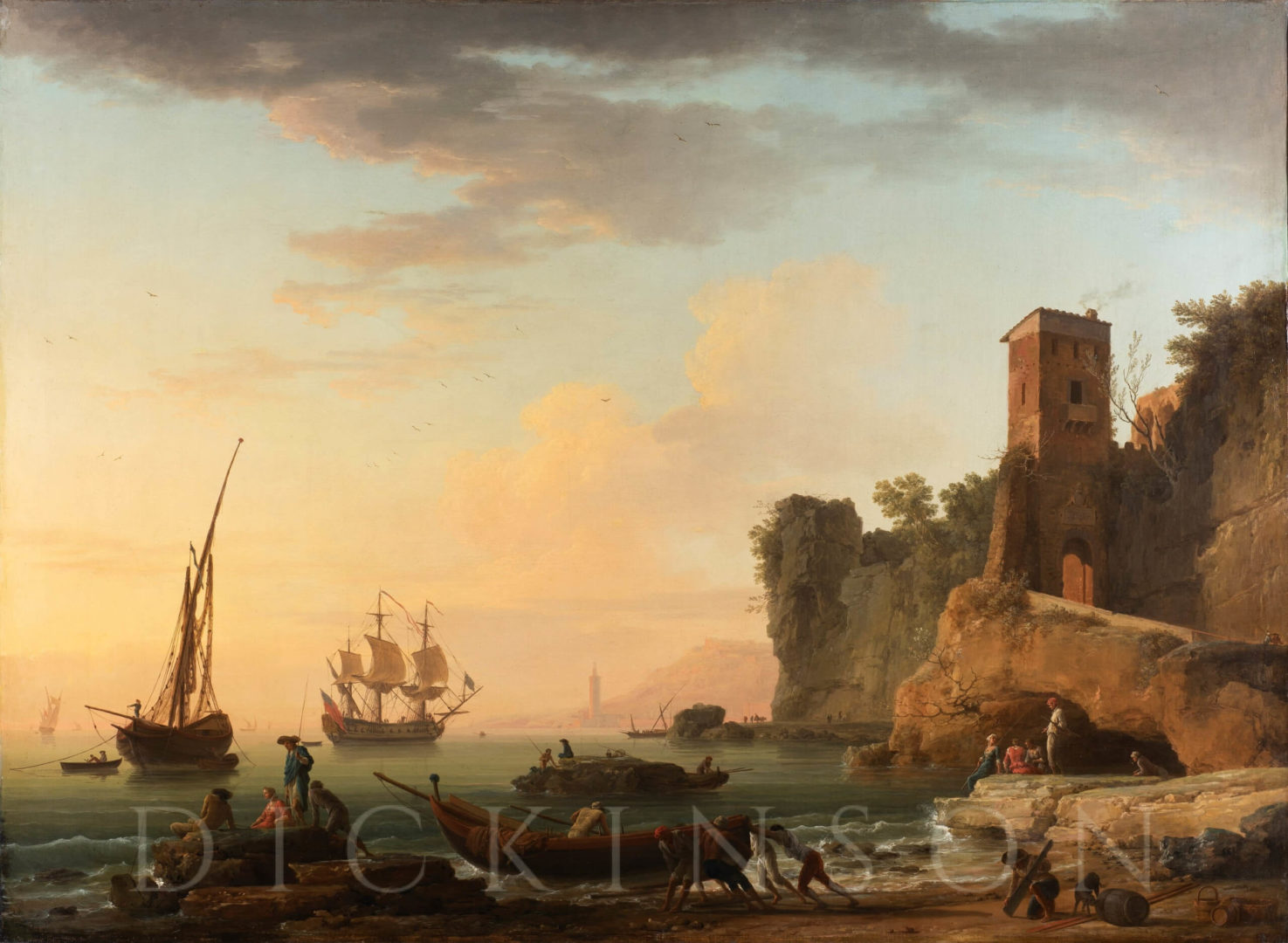Artists have historically travelled for a range of reasons, whether to seek new inspiration, to execute commissions or in search of new audiences. In the current world climate, with ongoing limitations on travel, artists’ views of foreign landscapes and cultures – whether topographical or imagined – can transport the viewer to new locations. The earliest of the Old Masters on view, Marcantonio Franceschini’s Pastoral Scene with nymphs and a shepherd (early 17th c.), transports the viewer to a classical Arcadia. Other examples focus on aspects of Grand Tour travel and collecting, including Giovanni Paolo Panini’s Rome, the Pantheon, a view of the interior from 1734. This superb view, currently being sold to benefit a charitable foundation, was commissioned by the English collector William Holbech for his estate, Farnborough Hall in Warwickshire. Claude-Joseph Vernet’s large-scale coastal seascape The Port of Genoa (1752), which boasts noble provenance, was painted just before Vernet returned from Italy to his native France, while his Marine Landscape (1775) was executed from studies and memory.
Continuing into the 19th century, Italophile Edward Lear’s Campagna di Roma (1860) is based on a plein-air sketch of the Roman environs, and his monumental The Forest of Bavella, Corsica (1868) is one of the most important views by Lear to come to the market in recent years. Two paintings by the great Orientalist Jean-Léon Gérôme, The Master of the Hounds (1871) and Baigneuses du Harem (1901), take us even further afield, courtesy of an effective combination of travel sketches, photographs, and the artist’s vivid imagination.

